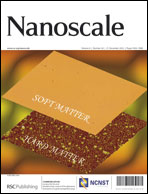It is well established that angiogenesis is the process of formation of new capillaries from pre-existing blood vessels. It is a complex process, involving both pro- and anti-angiogenic factors, and plays a significant role in physiological and pathophysiological processes such as embryonic development, atherosclerosis, post-ischemic vascularization of the myocardium, tumor growth and metastasis, rheumatoid arthritis etc. This is the first report of zinc oxide (ZnO) nanoflowers that show significant pro-angiogenic properties (formation of new capillaries from pre-existing blood vessels), observed by in vitro and in vivo angiogenesis assays. The egg yolk angiogenesis assay using ZnO nanoflowers indicates the presence of matured blood vessels formation. Additionally, it helps to promote endothelial cell (EA.hy926 cells) migration in wound healing assays. Formation of reactive oxygen species (ROS), especially hydrogen peroxide (H2O2)—a redox signaling molecule, might be the plausible mechanism for nanoflower-based angiogenesis. Angiogenesis by nanoflowers may provide the basis for the future development of new alternative therapeutic treatment strategies for cardiovascular and ischemic diseases, where angiogenesis plays a significant role.

You have access to this article
 Please wait while we load your content...
Something went wrong. Try again?
Please wait while we load your content...
Something went wrong. Try again?


 Please wait while we load your content...
Please wait while we load your content...